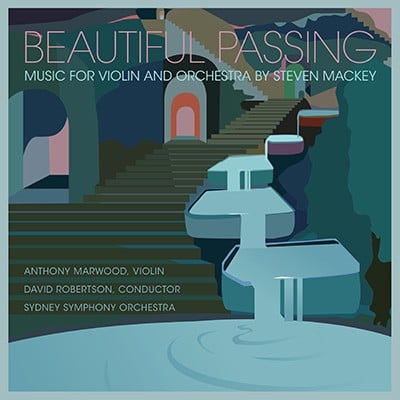3(II=afl,III=picc).3(III=corA).3(II=Ebcl,III=bcl).asax.3(III=dbn)-4.3(I=Dtpt).3.1-timp.perc(4):vib/glsp/chimes/almglocken/4 tuned nipple gongs/susp.cym/2 crash cym/tgl(lg)/3 bicycle bell/vibraslap/picc wdbl/cowbell(sm)/xyl/5 tom-t/lion's roar/2 bongos(hi,lo)/marimba/peking opera gong/tamb/SD/concert BD/drum set(sm)/tam-t(lg)/brake dr/flexatone/mark tree-harp-pft-strings
Abbreviations (PDF)
Boosey & Hawkes (Hendon Music)
Mnemosyne was a Greek Titaness, the Goddess of memory, and represents the memory required to preserve and retell the stories of history and sagas of myth. After sleeping with Zeus for nine consecutive nights, she became the mother of the nine muses. She also presided over a pool in Hades which was the counterpart to the River Lethe from which those that journeyed through the underworld drank to forget their past lives when reincarnated. Mnemosyne’s pool of remembrance was less frequented.
The role of memory in musical creation and reception is foregrounded in Mnemosyne’s Pool. As an example, consider a note recalled from an earlier point in the line that does not flow naturally from the note it succeeds. A large awkward leap can signal to the listener and performer that the next note relates as much to its own previous occurrence as it does to the preceding note. A disjuncture sometimes asks the listener to remember an earlier point in the line instead of continue inexorably forward.
On a scale larger than the note-to-note continuity of a line, consider the approach to the recapitulation in the first movement of Beethoven’s Eroica Symphony. In this famed passage, the horn enters with a return of the theme before the strings have arrived at the proper harmony. There is the prankster interpretation which holds that the horn simply enters too early, over zealously looking forward, but I prefer to hear the horn as looking back, as a fleeting memory. The harmonic solecism acts as a cue to tell me that this is not actually happening in the present but is a brief recollection before returning to the present.
There is also a middle ground that I find particularly interesting when, for example, a slightly peculiar harmonic move can be mollified by the presence of something vaguely familiar. Jagged musical grammar in the present tense can be smoothed by a comforting reference to the past. Syntax and memory can work together to create various shades of (dis)-continuity. The point is not to test your memory but rather to use memory as an expressive device in order to create unusual alchemies in the flavors of events and, more importantly, in the flow of events.
In fact, Mnemosyne’s Pool is perhaps most palpably concerned with flow, that is, with various kinds of motion: slow climbs, sprints, precarious balancing acts, quirky dances, somber marches, and of course, willfully discursive zigzags in time made possible by memory. Form arises more from arcs of energy than blocks of material.
Mnemosyne’s Pool is in five movements and is approximately 38 minutes long.
Movement 1: Variations (9’) uses a single melodic cell as the basis for 3 contrasting sections delineated by texture, (A – chorale-like, B – flute arabesque over static pizzicati, C – swarming masses of pizzicati), arranged in a symmetrical order: A+B+C+B’+A’.
Movement 2: Déjà vu (Medley) (9’) is less highly structured and more whimsical than Variations. It also has three distinct swatches of music but instead of being cut from the same cloth as in Variations, they are separate and discrete tunes loosely drawn together by free association. A is plaintive dance in the bassoons surrounding a more vigorous interruption. B is a chirping clarinet melody and C is a naïve romance in the violins accompanied by preposterous chatter. A+B+C+A’+B’+A"
Movements 3 & 4: Fleeting (4’:30") and In Memoriam A.H.S (4’:30") are played without pause. This, combined with the fact that their combined length is commensurate with the length of each of the previous movements (circa 9 min), they sort of function as a single movement even though the 2 movements contrast sharply. #3 is an energetic Jeux d'esprit and #4 is a stately lament. Maybe the interdependency engendered by the contrast – the yin and yang – actually works to fuse them as one.
Movement 5: Echoes (11’), in its first third, is made of kaleidoscopic refractions of the opening theme. Then comes a raucous, mocking intrusion that reveals a nostalgic daydream of the romance from the middle of movement 2. The last third drives home the opening theme, passes through at least one wormhole in time, before obsessive reiterations dissolve into the sound mass.
"To these ears, Mnemosyne's Pool is the first great American symphony of the 21st century... Stunningly well-integrated, unfolding with logic and conviction, the 38-minute, five-movement work is more a concerto for orchestra than symphony. Mackey's marvelous score features vital and often lovely solo passages for flute, oboe, cello, violin, saxophone, an energetic passage for piano and woodwinds, and more. But somehow it never feels overstuffed, because Mackey consistently finds an appropriate musical language for his ideas about the role of memory in musical creation..."
Musical America
"A dedication to complexity and a vast sense of orchestral coloration are the key elements of Steven Mackey’s impressive Mnemosyne’s Pool. It is in four movements for full orchestra and a battery of percussion and the score alternates between glimmering reflections, shadowy undulations, and jagged, hard-edged tonalities."
San Francisco Classical Voice

Sydney Symphony Orchestra
David Robertson
Canary Classics CC-22
